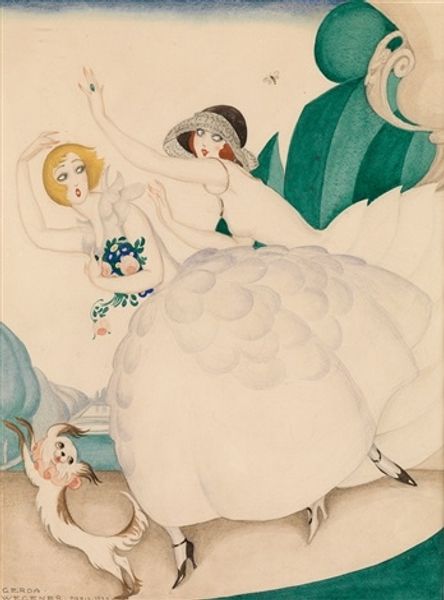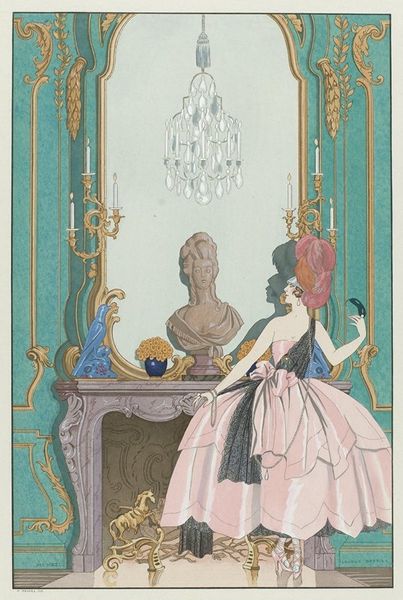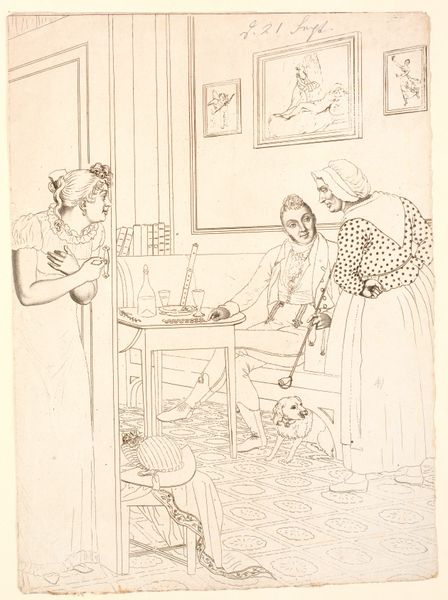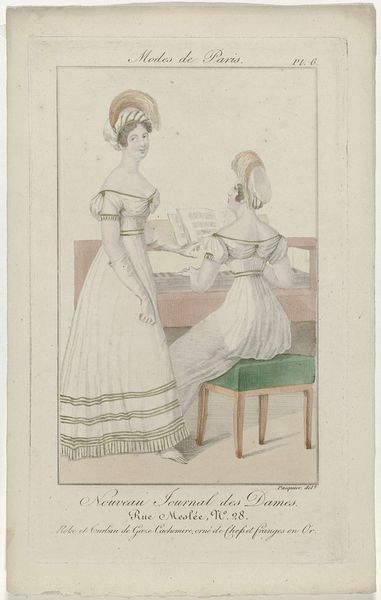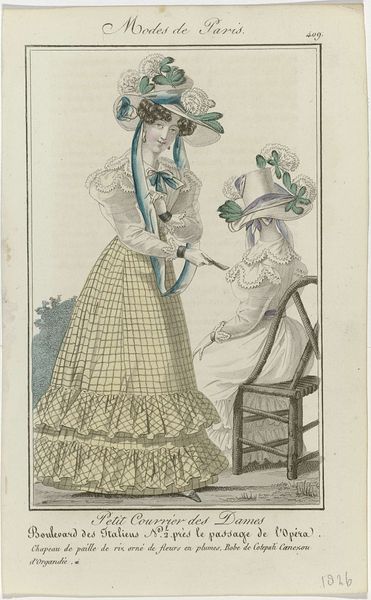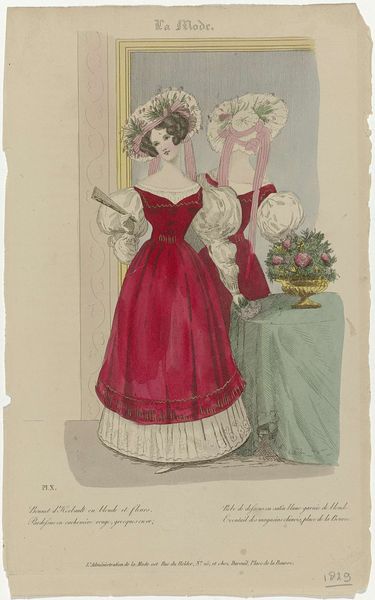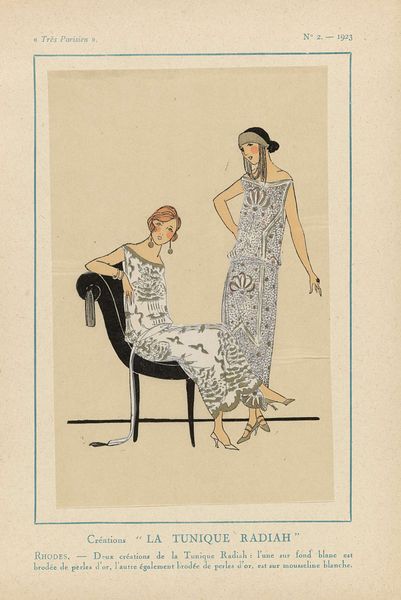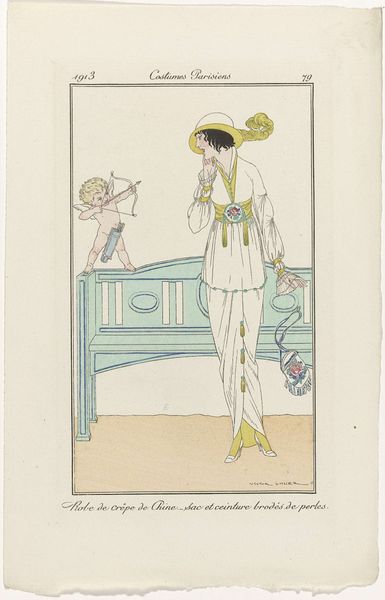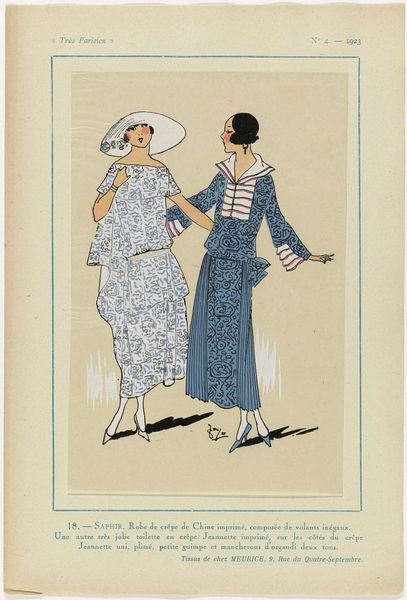
drawing, watercolor
#
portrait
#
drawing
#
art-nouveau
#
pastel soft colours
#
pastel colours
#
handmade artwork painting
#
watercolor
#
flat colour
#
intimism
#
watercolour illustration
#
genre-painting
Copyright: Public domain
Editor: Gerda Wegener's "Three Ladies: Teatime," made in 1918, renders a scene in watercolor and drawing with soft, elegant lines. It evokes such a specific time; the fashion is amazing. How do you read the creation of this image through its materiality? Curator: The deliberate choice of watercolor, and what appears to be drawing media – perhaps charcoal or chalk – isn't incidental. Watercolors were commercially accessible and broadly considered a material suitable for the applied arts, or "feminine" artistic practices. Wegener seems to subtly leverage that existing cultural association to frame the relationship between women and commodity. What labor went into dressing, primping and serving for tea time? Editor: That's fascinating! So the very materials she uses become part of the commentary on class and gendered labor. Curator: Precisely. Note the almost industrial evenness to the hatching in the dresses. The crispness in line work belies that "soft" impression, complicating our reading of "handmade." What level of consumption are these subjects engaged in? What kind of labor might they outsource to achieve this lifestyle, even casually? Editor: It is interesting to consider those themes within this artwork – you make me think of who is producing the raw materials for these clothing items! Thank you so much for pointing out these subtleties. Curator: Of course! By understanding the means of artistic production and its relationship to society, we see that even this seemingly delicate work prompts bigger questions about labour, wealth, and gender.
Comments
No comments
Be the first to comment and join the conversation on the ultimate creative platform.
